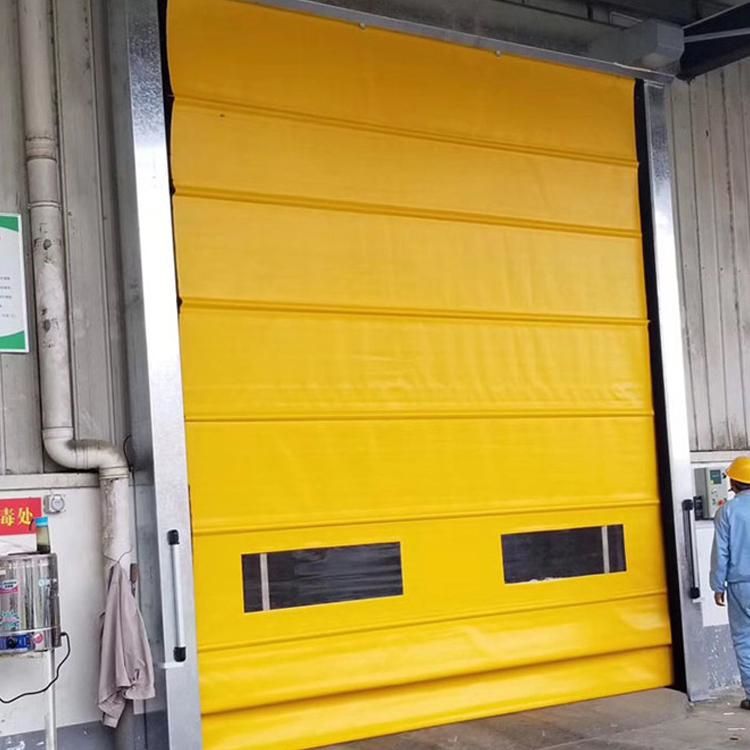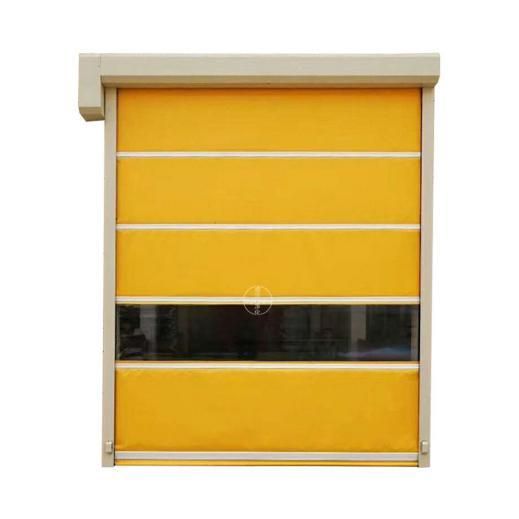Leave Your Message
Explore the advanced technology and industry applications of PVC high-speed doors
Introduction
High-speed door accessories purchasing guide: PVC As a modern door, PVC fast door is rapidly emerging in industrial, commercial, and other fields with its unique characteristics. This type of door is mainly made of polyvinyl chloride (PVC) material, combined with advanced technology and design, and can be opened and closed quickly, providing efficient, safe, and reliable door control solutions for different scenarios. The rise of PVC high-speed doors stems from the growing market demand for faster, more flexible, and more energy-saving door control systems. Market demand: improve productivity, temperature, and energy control, improve safety, comply with environmental protection trends, etc.
In general, PVC high-speed doors provide advanced, flexible, and reliable door control solutions while meeting the needs of different industries, so they are widely welcomed by the market.
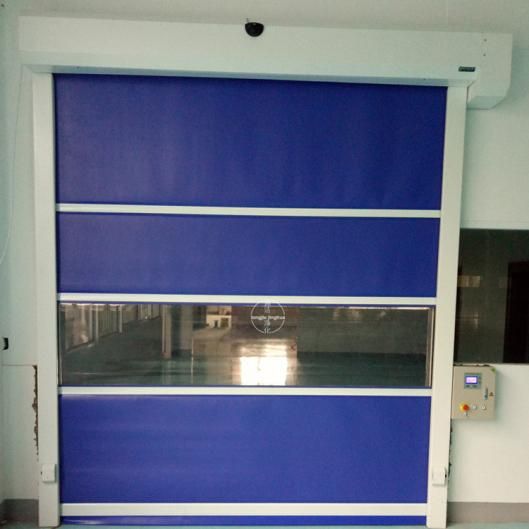
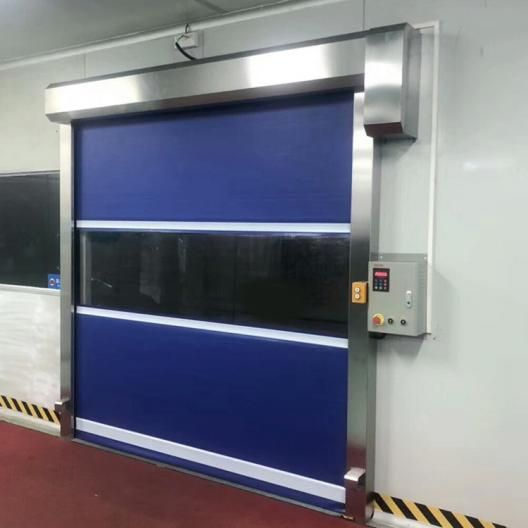
PVC high speed door overview
Basic definition and characteristics of PVC high-speed doors
The basic definition of PVC high-speed door:
The PVC high-speed door is an advanced door control system that uses polyvinyl chloride (PVC) as the main material. It uses advanced automation technology and motor drive systems to achieve fast and reliable door opening and closing. This kind of door control system is widely used in industrial, commercial and other fields to meet the needs of fast, efficient, and safe door control.
Features of PVC high-speed doors:
Quick response: PVC high-speed doors have the characteristics of rapid opening and closing, and can complete the action within seconds, minimizing traffic jams and improving work efficiency.
Superior sealing performance: PVC material itself has good sealing performance. The design of the high-speed door can effectively isolate indoor and outdoor air circulation and meet the requirements of a clean environment and temperature control.
Customized design: PVC high-speed doors can be customized according to the specific needs of customers, including size, color, opening method, etc., to adapt to the requirements of different industries and scenarios.
Durable and reliable: PVC material has the characteristics of corrosion resistance and weather resistance, which makes the high-speed door have good durability and can adapt to harsh environments and high-frequency use.
Safety guarantee: The high-speed door is equipped with advanced safety sensors and anti-collision systems, which can detect obstacles in time and stop movement to ensure the safety of personnel and equipment.
Energy saving and environmental protection: PVC high-speed doors can effectively isolate the temperature difference between indoors and outdoors and reduce energy consumption by closing quickly, which is in line with the modern trend of environmental protection and energy saving.
Various opening methods: High-speed doors can adopt different opening methods, including roller shutter type, folding type, sliding type, etc., to adapt to different spaces and usage scenarios.
Easy to maintain: Simple design, easy to maintain. Some high-speed doors are also equipped with intelligent monitoring systems that can monitor the door status in real-time and improve maintenance efficiency.
Through these characteristics, PVC high-speed doors have become an advanced representative of modern door control systems, providing enterprises with an efficient, safe, and reliable door control solution suitable for various application scenarios.
Industry development trends and market prospects
Industry development trends:
Application of intelligent technology: With the continuous advancement of intelligent and automation technology, the PVC high-speed door industry is actively adopting intelligent sensors, remote monitoring, and adaptive control systems to improve the intelligence and flexibility of the door control system.
Energy efficiency optimization: The industry's focus on energy efficiency continues to increase. The design trend of PVC high-speed doors pays more attention to energy conservation and environmental protection and meets the needs of sustainable development by improving insulation performance and reducing energy consumption.
Increased demand for customization: The demand for customization of door control systems in different industries continues to increase. PVC high-speed door manufacturers will pay more attention to meeting customers' specific personalized needs such as size, color, and opening method.
Improvement of fire protection and safety standards: With the continuous improvement of safety standards, the demand for PVC fire-resistant high-speed doors is gradually increasing, especially in some industries with extremely high safety requirements, such as the chemical industry, medicine, etc.
Global supply chain transparency: Global supply chain transparency is one of the development trends in today's industry. PVC high-speed door manufacturers will face greater competitive pressure and will also gain wider market opportunities.
market expectation:
Expansion of industry scale: With the increasing demand for door control systems in various industries, the scale of the PVC high-speed door market is expected to continue to expand. Especially in the fields of logistics, manufacturing, medicine, and food, the market prospects are broad.
Emerging application fields: With the continuous innovation of technology, the application fields of PVC high-speed doors will continue to expand. For example, the demand for clean rooms, medical equipment areas, electric vehicle charging stations, and other fields is expected to grow rapidly.
International market expansion: PVD high-speed door manufacturers will more actively expand the international market, obtain more business opportunities through global cooperation, and provide customers with a wider range of product and service options.
Innovative product launch: To meet the changing needs of the market, PVC high-speed door manufacturers will continue to launch innovative products, combining new materials and smart technologies to improve product performance and user experience.
Compliance and environmental protection: As society attaches great importance to environmental protection and sustainable development, PVC high-speed door manufacturers will pay more attention to the environmental performance of their products and comply with relevant regulations and standards.
Overall, the PVC high-speed door industry will face broader market opportunities in the future. As technology and markets change, the industry will maintain a dynamic development trend and provide users with more advanced and reliable door control solutions.
Emphasize the advantages of PVC material in high-speed doors
Advantages of PVC material in high-speed doors:
Excellent weather resistance: PVC material has excellent weather resistance and can resist ultraviolet rays, high temperatures, and cold and humid environments, maintaining the stability and appearance of the door body for a long time.
Strong corrosion resistance: PVC high-speed doors perform well in harsh industrial environments and are resistant to corrosive substances such as chemicals, acids, and alkalis, extending the service life of the door.
Lightweight and high strength: PVC material is lighter than other materials, but at the same time maintains high strength, making the door structure more stable, reducing the load on the motion system, and improving the stability of the system.
Flexibility and elasticity: PVC has good elasticity and flexibility, allowing high-speed doors to quickly return to their original shape when encountering a collision, reducing the possibility of damage and improving safety.
Excellent insulation performance: PVC material is an excellent insulation material, which helps isolate indoor and outdoor temperatures, improves energy efficiency, and is suitable for places that require temperature control.
Low cost and high-cost performance: Compared with some traditional door control materials, PVC has a lower production cost, and its superior performance makes the maintenance cost of high-speed doors in long-term operation relatively low and has a high-cost performance.
Easy to process and customize: PVC material is easy to process into different shapes and sizes, allowing customized designs of high-speed doors to meet the specific needs of different customers.
Environmentally friendly and sustainable: PVC material has relatively little environmental impact during its manufacturing and use, has good environmental protection, and is in line with modern society's pursuit of sustainable development.
By giving full play to the advantages of PVC materials, high-speed doors can not only perform well in various application scenarios but also meet users' high requirements for durability, safety, energy conservation, and environmental protection, making them an ideal choice for door control systems. In the development of the industry, PVC high-speed doors will continue to occupy an important position in the market due to their unique material characteristics and continue to adapt to the needs of different fields.

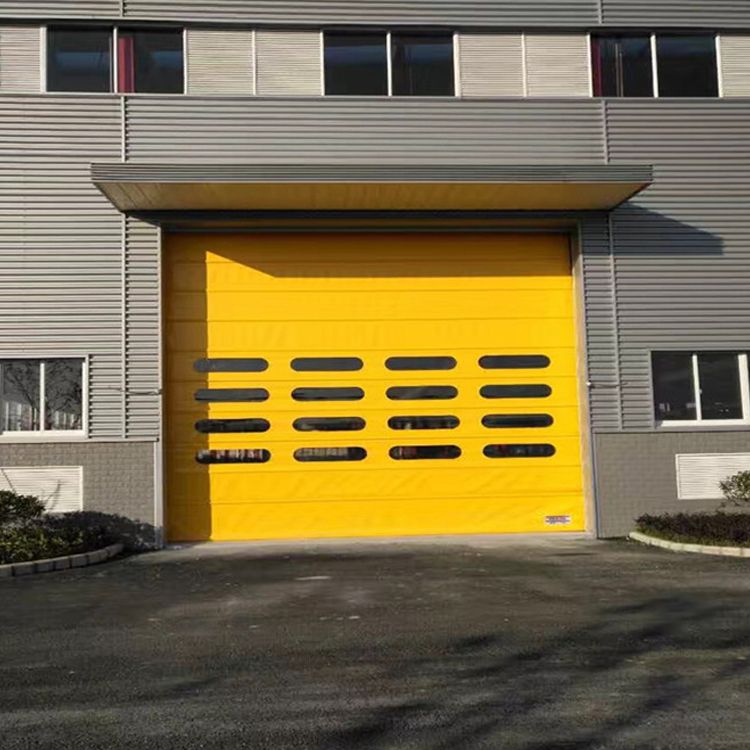
PVC high-speed door customization service
The Importance and Advantages of Customized Services
The importance and advantage of PVC high-speed door customization service is to meet the specific needs of customers and improve the performance and adaptability of the door. Here are some key benefits and importance:
Personalized needs met:
Customization services can design and manufacture high-speed doors based on customers' specific needs, space constraints, and application environments. This ensures that the door fully meets the customer's expectations and requirements.
Adapt to different industry needs:
Different industries have different needs for high-speed doors. Through customization services, customers can be provided with customized doors according to the standards and specifications of different industries to meet their special business needs.
Improve performance and durability:
Customization services allow for the selection of appropriate materials, technology, and design to enhance door performance and durability. This is especially important for high-frequency use occasions, such as logistics centers, factories, etc.
Safety and compliance:
Customization services ensure door designs comply with safety standards and relevant regulations. This is particularly important for some industries, such as food processing, pharmaceuticals, etc., where hygiene and safety requirements are high.
Improve efficiency:
Customized high-speed doors can be optimized according to the customer's process and operation requirements to improve overall efficiency. For example, automated control systems, quick opening and closing functions, etc. can improve the efficiency of logistics and production processes.
After-sales service and support:
Customized services are usually accompanied by more personalized after-sales service. Manufacturers can provide more professional support, maintenance, and warranties to ensure the door remains in top condition for long-term use.
cut costs:
Although customization services may be slightly expensive initially, in the long run, custom doors may result in better economics by lowering maintenance costs and providing better performance.
Overall, PVC high-speed door customization services can meet the needs of various customers and provide more flexible, safe, and efficient door solutions, thereby playing an important role in different industries and application fields.
Process and precautions for providing customized services
Providing customized services involves multiple steps, from initial communication with the customer to product delivery and after-sales service. The following is the general customization service process and precautions:
Customized service process:
demand analysis:
Conduct in-depth needs analysis with customers to understand their specific needs, expectations, and special requests. Determine custom door specifications, functionality, and design requirements.
Give suggestion:
Based on customer needs, we provide professional suggestions and solutions, including material selection, design optimization, performance characteristics, etc.
Quotes and Contracts:
Provide a detailed quote specifying the price, delivery time, and scope of services. Make sure the customer has a clear understanding of the cost and conditions of a custom door. Sign a contract to clarify the responsibilities and rights of both parties.
Design and Validation:
Develop detailed design drawings of the door, confirm with the customer, and obtain approval. Ensure designs meet client expectations and requirements.
manufacturing:
Begin production of custom doors, ensuring design specifications and customer requirements are followed. Monitor the manufacturing process to ensure product quality and compliance with delivery times.
Testing and Quality Control:
Custom doors are fully tested and quality-controlled before delivery to ensure they meet specifications and standards.
Delivery and installation:
Custom doors are delivered to the customer's specified location and professionally installed. Ensure doors operate properly and meet design requirements.
Training and documentation:
If necessary, provide training on use and maintenance, as well as relevant documents and manuals so that customers can better understand and manage custom doors.
After-sales service:
Provides after-sales service and support for custom doors, including maintenance, warranty, and prompt response to customer questions.
Notes on customized services:
Effective communication:
Maintain clear, timely, and effective communication with customers to ensure consistency of needs and expectations between both parties.
Detailed requirements document:
Make sure the customer's needs are documented in detail and clearly stated in the contract to avoid misunderstandings and disputes later on.
Flexibility and adaptability:
Remain flexible throughout the process and adapt based on customer feedback and needs.
QC:
Ensure that strict quality control measures are implemented during production and testing to ensure the high quality of custom doors.
Professional advice:
Provide professional advice but at the same time respect the customer's opinions and decisions to ensure the final product meets their expectations.
transparency:
Maintain transparency and provide customers with timely information on production and delivery progress to build a trusting relationship.
After-sales support:
Provide comprehensive after-sales support to ensure that customers can receive timely help and maintenance services during use.
By following the above processes and considerations, suppliers can provide high-quality customized services that meet customers' individual needs while building strong relationships.

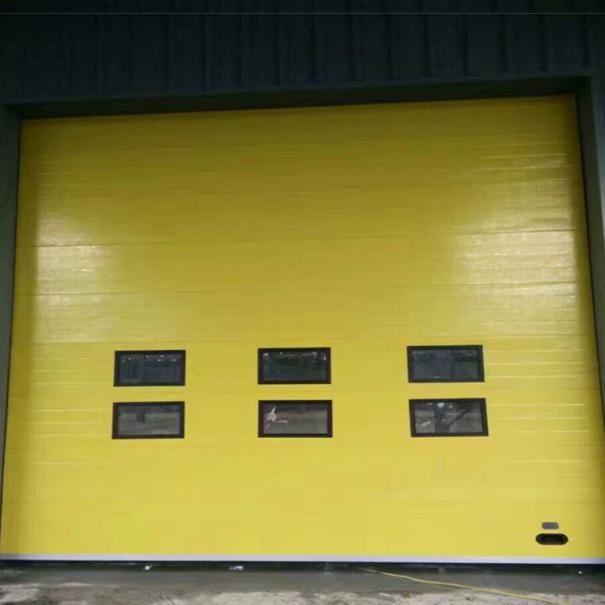
Industrial Grade PVC High Speed Door Price Comparison
Various factors affect the price of PVC high-speed doors. Here are some key factors that may affect the price and some suggestions:
Dimensions and Specifications:
Larger-sized doors are usually more expensive than smaller-sized doors. Make sure you choose a door size and specification that meets your specific needs to avoid unnecessary costs.
Material quality:
Choosing high-quality PVC material as well as other additional materials (such as metal frames, drive systems, etc.) is key to ensuring the durability and performance of the door. Don’t compromise on quality to save costs.
Opening and closing speed:
Faster opening and closing speeds often require more advanced technology and equipment, which can affect prices. Choose the appropriate speed level based on your specific needs.
Security features:
If your application requires additional safety features, such as fire resistance, obstacle avoidance systems, etc., this may increase the cost. Make sure you meet industry standards and regulations when choosing.
Automation level:
Consider your automation needs. Highly automated doors may include automatic sensors, remote control systems, etc., but this may increase the cost. Make sure the level of automation you choose matches your actual needs.
Brand and manufacturer:
Choose well-known brands and manufacturers with good reputations to ensure product quality and after-sales service. Although their products may be slightly more expensive, they are usually a worthwhile investment.
Customization requirements:
If there are special customization requirements, such as special colors, designs, or features, this may result in a price change. Ensure adequate communication with manufacturers to ensure customization needs can be met.
Location:
Differences in cost and logistics fees in different regions may affect the final price. When choosing a supplier, consider location and possible additional costs.
After-sales service and warranty:
Consider the after-sales service and warranty policies offered by the manufacturer. Make sure they can provide timely support when needed.
When choosing PVC high-speed doors, it is recommended that you conduct careful demand analysis, communicate with multiple manufacturers, and obtain quotations and product information from different suppliers. Compare options, weigh cost versus performance, and choose the high-speed door that best fits your needs and budget. At the same time, ensure that the products you choose comply with relevant safety standards and regulations.
Detailed explanation of the installation steps of high-speed automatic doors
Steps and points of the installation process
The installation of PVC high-speed doors is a complex process that requires professional skills and experience. The following are the general installation process steps and key points:
Measure and plan:
Before installation, take precise measurements to ensure the door size matches the installation space. Carry out detailed planning, including door location, opening direction, power supply, and control device installation locations, etc.
Prepare the installation site:
Clear the installation area to ensure it is free of obstructions and debris. Check the flatness and structural strength of floors and walls to ensure they can withstand the weight and movement of the door.
Install the door frame and rails:
Installing the door frame and rails is the first step of installation. Make sure the door frame is vertical and level and the guide rails are parallel. Perform precise installation according to specifications provided by the manufacturer.
Install door leaves:
When installing the door leaf make sure it moves smoothly in the rails. Adjust the level and verticality of the door leaf to ensure there is no obstruction or deflection when opening and closing.
Install the driver system:
Install the door drive system, including the motor, transmission chain driving device, etc. Make sure the drive system connections are secure and adjust the motor position and parameters according to the manufacturer's guidelines.
Connect the power supply and control system:
Connect power to the door and make sure the electrical system complies with local electrical codes. Install control systems, including switches, remote controls, or automatic sensors.
Test and tweak:
Conduct system testing before official use. Check the various parts of the door to make sure they are functioning properly. Adjust the parameters of the motor and transmission system to ensure smooth movement and accurate stopping of the door.
Security check:
Carry out safety checks to ensure that the door will not cause harm to people and objects when moving. Test obstacle avoidance systems and emergency shutdown devices to ensure they will function properly when needed.
Provide user training:
Provide end-user training on door operation and maintenance. An instruction manual and maintenance guide are provided to ensure users understand how to properly operate and maintain the door.
Clean up and finish:
Clean the installation site and ensure all tools and materials are properly disposed of. Ensure users are satisfied and answer any questions they may have.
Installation of PVC high-speed doors needs to be completed by professional technicians or installation teams. Before proceeding with installation, it is recommended to carefully read the installation manual and guidelines provided by the manufacturer and ensure that all safety regulations and local regulations are followed. If you do not have the relevant expertise, it is recommended to seek professional installation services to ensure the quality and performance of the door installation.
Client engagement and monitoring recommendations
The installation of high-speed automatic doors is a complex process involving multiple steps, and customer involvement and monitoring are critical to ensuring the success of the project. Below are detailed steps for high-speed automatic door installation, with recommendations for customer engagement and monitoring:
Requirements analysis and planning phase:
Client Engagement: Conduct a detailed needs analysis with the client before the project begins to understand their expectations, special needs, and budget constraints.
Monitoring recommendations: Customers should monitor at this stage to ensure that requirements are accurately recorded and understood and that the final product meets expectations.
Design and Engineering Phase:
Customer Involvement: Customers can participate in design reviews and provide feedback to ensure the design meets their aesthetic and functional needs.
Monitoring recommendations: Clients should regularly review design progress and ensure their feedback is properly considered.
Equipment procurement and manufacturing:
Customer participation: When selecting automatic door equipment, customers can participate in selecting the model and brand that suits their needs.
Monitoring suggestions: Customers should ensure that the equipment they purchase meets expected quality standards and can ask suppliers to provide relevant certification documents.
Infrastructure preparation:
Customer Involvement: Customers need to ensure that the installation site meets the technical requirements for automatic doors, such as power supply and space requirements.
Monitoring recommendations: Customers should monitor at this stage to ensure that infrastructure preparations are proceeding as planned and problems are discovered and resolved promptly.
installment and debugging:
Customer Involvement: Customers can participate in supervising the installation process to ensure that equipment is installed correctly according to specifications.
Monitoring recommendations: Customers should regularly check the installation progress to ensure compliance with safety standards and resolve possible problems promptly.
Training:
Customer Engagement: Receive training on the proper use and maintenance of high-speed automatic doors.
Monitoring Recommendations: Customers should ensure the quality and completeness of training to ensure long-term proper operation of equipment.
Maintenance and service:
Customer Involvement: Customers are required to participate in regular maintenance programs to ensure that equipment is always maintained in optimal condition.
Monitoring recommendations: Customers should monitor the quality of maintenance services to ensure timely response and problem resolution.
By actively participating and monitoring throughout the installation process, customers can ensure that the high-speed automatic door project proceeds as expected and provides a safe and reliable service during the usage phase.

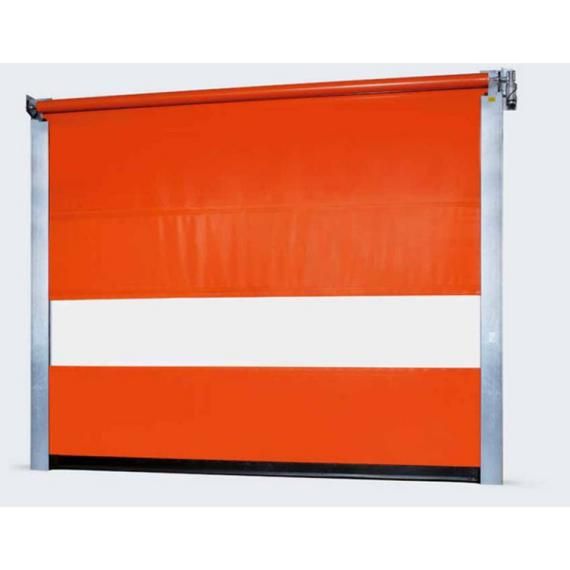
Analysis of the material advantages of commercial PVC fast doors
The unique advantages of PVC materials in commercial applications
PVC (polyvinyl chloride) is a common plastic material that offers many unique advantages in commercial applications. Here are some of the significant advantages of PVC in the commercial sector:
Corrosion Resistance: PVC has excellent corrosion resistance and can resist the attack of many chemicals. This makes it ideal for manufacturing durable and long-lasting products in many industries, such as piping systems, chemical storage containers, and more.
Weather Resistance: PVC is less susceptible to UV rays, moisture, and climate change, allowing it to maintain stable performance in both outdoor and indoor applications. This makes PVC ideal for manufacturing window frames, doors, roof panels, and other building materials.
Electrical insulation: PVC is an excellent electrical insulating material, so it is widely used in the electrical and communication industries to manufacture cables, trunking, and other electrical equipment.
Affordable: PVC is one of the relatively cheap plastic materials with low production costs, making it an affordable option for commercial applications.
Strong plasticity: PVC is easy to process and shape, and can be used to manufacture products of various shapes and sizes through blow molding, extrusion, injection molding, and other methods. This plasticity makes PVC widely used in manufacturing pipes, profiles, packaging materials, etc.
Insulating properties: PVC has excellent insulating properties, so it is often used in the manufacture of electrical insulation materials. This is important to protect cables and electrical equipment from the external environment.
Recyclability: PVC material is recyclable, which is in line with the trend of modern businesses pursuing sustainable development and environmental protection.
Flame retardancy: PVC has certain flame retardancy, making it a suitable choice under some special requirements, such as the construction and automotive industries.
Overall, PVC has become a widely used material in commercial applications due to its diverse advantages, covering many fields such as construction, electrical, chemical, and packaging.
The impact of material selection on door performance and lifespan
Material selection is an important factor in door design and manufacturing, directly affecting the performance and life of the door. Different materials have their characteristics and are suitable for different application scenarios. Here are some common door materials and their impact on door performance and lifespan:
Steel door:
Performance Impact: Steel doors generally have high strength and durability, providing good security and anti-theft properties. They also generally have better fire resistance.
Lifespan Impact: Steel doors can have a long life when properly maintained, but they may be affected by corrosion and require anti-corrosion treatment or the use of steel that is not prone to rust.
Aluminum doors:
Performance impact: Aluminum alloy doors are lightweight, corrosion-resistant, and strong, making them suitable for indoor and outdoor use. They can also be customized in a variety of colors and styles.
Life span impact: Aluminum alloy doors have a longer service life in outdoor environments because aluminum does not rust easily. However, strong acid and alkali environments may require special handling.
Plastic/UPVC Doors:
Performance Impact: Plastic doors are typically lightweight, water- and corrosion-resistant, and suitable for both indoor and outdoor use. UPVC doors also have thermal insulation properties.
Lifespan Impact: Plastic doors have less impact on humidity and sunlight, so they have better durability in outdoor environments. However, it may be affected by physical damage.
Glass door:
Performance impact: Glass doors are great for creating bright, open environments, but often need to be combined with other materials to provide support for the frame.
Lifespan Impact: The glass itself will not rot or rust, but it is susceptible to breakage during use. The frame material of the glass door will have an impact on the life of the door.
When selecting door materials, factors such as the door's purpose, environmental conditions, safety performance, appearance requirements, and maintenance costs need to be comprehensively considered to ensure that the selected material can meet the expected performance and life requirements. At the same time, regular maintenance and upkeep are also important factors to ensure long-term use of the door.
PVC high-speed door maintenance tips sharing
The importance of maintenance
Maintenance is critical to the performance and longevity of your door. Whether the door is used for residential, commercial, or industrial purposes, regular maintenance ensures proper operation, safety, and long-term use of the door. Here are some key aspects of how maintenance affects door performance and life:
Keep it up and running: Regular maintenance checks the various parts of your door to make sure they are functioning properly. Lubricating door tracks, checking door locks and hinges, and adjusting door alignment can all help prevent wear and failure over time.
Extended life: Maintenance can help extend the life of your door. By identifying and treating potential problems promptly, extensive damage can be avoided, extending the life of your door.
Ensure safety: For doors that require special safety requirements, such as automatic doors and fire doors, maintenance is the key to ensuring their safety performance. Regular inspection of automatic door sensors, fire door seals, and other components can prevent potential safety hazards.
Save maintenance costs: Regular maintenance can detect and solve problems early and avoid emergency repairs. Emergency repairs often result in higher repair costs, while regular maintenance can effectively reduce overall repair expenses.
Improve performance: Regular maintenance helps ensure that the door's various performance indicators, such as opening and closing speed, sealing performance, etc., are always within the design requirements.
Adapt to environmental changes: Doors may be affected by environmental factors, such as weather changes, humidity, temperature, etc. Maintenance helps adjust the door's components to accommodate these changes and keep it functioning properly.
Overall, maintenance is key to ensuring your door remains in good condition, performs reliably, and extends its service life. Through regular inspection, cleaning, and maintenance, you can minimize the possibility of door failure and increase its reliability and safety.
Provide practical maintenance tips and cycle recommendations
Here are some practical door maintenance tips and recommended periodicity:
Door track and pulley cleaning:
Cycle: every 3-6 months
Tip: Clean dust, dirt, and other debris from door tracks and pulleys to ensure the door slides unimpeded. Use detergent and a soft brush to clean, then apply a light lubricant.
Door seal and gasket inspection:
Period: every 6 months
Tip: Check the door seals and gaskets to make sure they are intact. If there are wear or cracks, replace them promptly. This is essential to maintain the soundproofing and waterproofing properties of the door.
Door lock and hinge lubrication:
Period: every 6 months
Tip: Coat door locks and hinges with a suitable lubricant to ensure they operate smoothly when opening and closing. Check and tighten screws regularly.
Automatic door system inspection:
Cycle: every 3-6 months
Tip: For automatic doors, check the operation of sensors, cables, motors, and control systems. Adjust the position of the sensor, clean the motor and gears, and ensure the system is working properly.
Fire door inspection:
Period: Every year
Tip: For fire doors, check that seals, frames, leaves, and gaps are intact. Ensure fire doors comply with relevant safety standards and regulations.
Coatings and surface protection:
Period: every 2 years
Tip: Regularly inspect the door's finish, clean it, and repair it. If there are signs of rust, treat and recoat promptly to prevent corrosion.
Electrical connection check:
Period: Every year
Tips: For power doors, check the electrical connections, cables, and control panel. Ensure the safety and proper operation of electrical systems.
Door glass cleaning:
Cycle: Every 1-2 months
Tip: For the glass portion of the door, clean it with an appropriate cleaner to ensure transparency and appearance.
These periodic maintenance recommendations can be adjusted based on the frequency of use, environmental conditions, and type of door. Regular maintenance ensures your doors stay in good condition, extending their lifespan, improving performance, and reducing the cost of repairs and replacements.
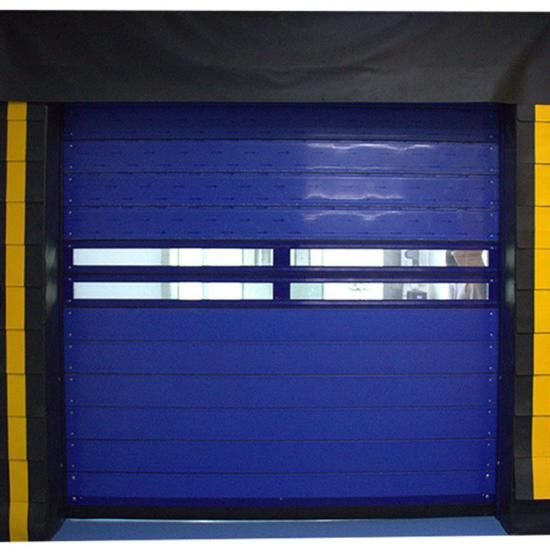
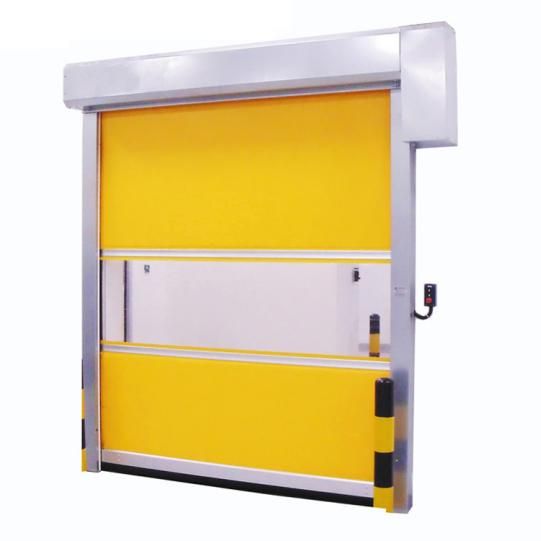
Design Points of Customized PVC High-Speed Doors
Basic elements of custom design
The design points of custom PVC high-speed doors involve several basic elements that will affect the performance, appearance, and reliability of the product. Here are some basic design elements for custom PVC high-speed doors:
Opening and Closing Speed: One of the main features of high-speed doors is their ability to open and close quickly. Ensure the design meets the customer's opening and closing speed requirements.
Size and shape: Determine the exact size and shape of the high-speed door based on the installation space and customer needs.
Material selection: Choose high-quality materials for PVC high-speed doors to ensure durability, weather resistance, and ease of cleaning. PVC is usually used in the production of door curtains.
Curtain Structure: Determine the structural design of the curtain, including texture, thickness, and reinforcements, to meet the door's performance requirements.
Drive System: Choose the right electric drive system to ensure reliability and efficient performance. This may involve motor type, control system, etc.
Safety Sensor: Integrate safety sensors to monitor the movement of the door and ensure that movement is stopped in time when an obstacle is detected to improve safety.
Windproof performance: Consider the windproof performance of the door in high wind speed environments to ensure the stability of the door curtain under different weather conditions.
Temperature control: For some application scenarios, it may be necessary to consider the temperature control function of the door to maintain the stability of the indoor environment.
Control System: Design an easy-to-use control system that may include remote control, automation integration, and timing functions.
Color and Appearance: Determine the exterior design of the door, including color, logos, and other decorative elements.
Maintenance and Care: Consider design to allow for easy maintenance and regular inspections to extend the life of your high-speed door.
Cost-effectiveness: Consider cost factors in the design to ensure that the customer's budget requirements are met.
Regulations and Standards: Ensure designs comply with relevant regulations and industry standards to ensure product compliance.
Before starting the design, it is very important to conduct a full communication and needs analysis with the client to ensure that the design meets their specific requirements. At the same time, close attention is paid to the performance, safety, and reliability of high-speed doors to ensure that custom-designed PVC high-speed doors can perform well in actual use.
Case studies showcase successful design practices
When it comes to the design of custom PVC high-speed doors, here are some basic elements and case studies of successful design practices:
demand analysis:
Elements: customer needs, usage environment, special requirements.
Case: During detailed discussions with the customer, the design team learned that the customer needed a high-speed door that could adapt to a high-traffic industrial environment, while also taking into account dustproof, windproof, and isolation requirements.
Functional requirements and performance metrics:
Elements: Door opening speed, safety performance, durability.
Case: The design team determined the opening speed of the PVC rolling shutter door in meters per second, and equipped it with advanced safety sensors and anti-collision devices to ensure safety and reliability during use.
Dimensions and Specifications:
Elements: Door size, weight, adaptability.
Case: Based on the actual size of the customer's factory entrance, the design team customized the size of the PVC high-speed door to ensure the door's perfect fit.
material selection:
Elements: Quality, and durability of PVC material.
Case: High-quality PVC material is selected to ensure that the door has good weather resistance, durability, and chemical resistance.
Manufacturing process:
Elements: Production process, assembly process.
Case: Adopted advanced production technology, including digital manufacturing and automatic assembly lines, to improve production efficiency and product quality.
Appearance design:
Elements: Appearance, color, brand identity.
Case: By working with the customer, the exterior design of the door, including color and customer branding, was determined to ensure that the product was consistent with the overall image of the factory.
safety:
Elements: Safety sensors, anti-collision devices.
Case: Integrating an advanced safety sensor system ensures that the door can quickly stop movement when an obstacle is detected, reducing the risk of accidents.
user experience:
Elements: Ease of use, maintainability.
Case: The door operation interface is simplified and a user-friendly maintenance manual is provided to ensure that customers and maintenance personnel can easily use and maintain the high-speed door.
Regulations and Standards:
Elements: Comply with industry standards and regulations.
Case: Ensure the design meets relevant local and international high-speed door safety standards and regulations.
Testing and Quality Control:
Elements: Rigorous test plan, quality control process.
Case: Strict quality control is implemented during the production process, and various tests are conducted to ensure that the performance of each door meets the design requirements.
These elements and case studies help ensure that custom PVC high-speed doors are designed to meet customer needs, provide high performance and safety, and comply with relevant regulations and standards. Successful design practices often involve multiple team members working collaboratively to ensure the product's success in the marketplace.
The importance of purchasing accessories
When purchasing accessories for high-speed doors, especially when it comes to PVC materials, here is a guide to the importance of purchasing accessories:
PVC material quality: The first thing to consider is the quality of the PVC material used in accessories. High-quality PVC has good weather resistance, chemical resistance, and the ability to maintain stability under different environmental conditions.
Performance and Functional Match: Ensure that the PVC fittings purchased match the performance and functional requirements of the high-speed door. For example, if the door needs to be waterproof or dustproof, make sure the PVC fittings you choose have these features.
Wear resistance: High-speed doors may open and close frequently, so the PVC accessories purchased should have sufficient wear resistance to ensure that long-term use will not cause wear or damage to the accessories.
Flexibility: Consider the flexibility of the PVC material, especially for parts that require bending or bending. Flexible PVC fittings make it easier to adapt to different shapes and sizes of high-speed doors.
Color and appearance: The color and appearance of accessories have a greater impact on the appearance of the overall product. Make sure the PVC fittings you choose match the look and design of your high-speed door to maintain overall aesthetics.
Sustainability: Consider the sustainability of PVC materials and choose accessories that meet environmental standards. More and more companies are paying attention to sustainable development, and choosing environmentally friendly materials is in line with market trends.
Weather resistance: PVC accessories need to have good weather resistance to resist the effects of extreme weather conditions such as ultraviolet rays, high temperatures, and low temperatures. This is especially important for outdoor high-speed doors.
Safety: If the PVC accessories involve safety features, such as anti-collision devices, ensure that they comply with relevant safety standards and regulations.
Supplier reputation: Choose suppliers with good reputations and experience to ensure the quality of purchased accessories and the reliability of supply.
Customization options: If your high-speed door requires custom PVC fittings, make sure your supplier can provide products that meet your custom requirements.
Cost Effectiveness: There is a balance between cost and performance to consider when choosing PVC fittings. Low-cost accessories may save costs, but they must not sacrifice product quality and performance.
Generally speaking, when purchasing PVC accessories, you need to comprehensively consider multiple factors such as material quality, performance, durability, appearance, etc., to ensure that the high-speed door can remain stable, efficient, and safe during use.
Emphasis on the application and advantages of PVC materials in accessories
Among high-speed door accessories, PVC material is often used to make roller shutter blades (also called roller shutter blades), which are an important part of high-speed doors. The following are the applications and advantages of PVC materials that are emphasized when purchasing high-speed door accessories:
Lightweight and strong: PVC material is lightweight, making the roller shutter door blades relatively lightweight. At the same time, PVC is also a strong material that can provide sufficient strength and durability to ensure that the door body is not easily damaged during high-frequency use.
Good weather resistance: PVC has excellent weather resistance and can resist sun, rain, and extreme temperatures. This makes PVC material very suitable for outdoor high-speed doors, which can maintain stable performance whether in cold winter or hot summer.
Corrosion and Chemical Resistance: PVC is resistant to many chemicals and corrosive environments. This allows PVC roller shutters to maintain a good appearance and performance in environments subject to chemical or industrial contamination.
Easy to clean and maintain: PVC has a smooth surface and does not easily absorb dust and dirt, so it is very easy to clean. Not only does this help maintain the appearance of the door, it also simplifies maintenance and reduces maintenance costs.
Good insulation properties: PVC is an excellent insulation material that helps provide thermal and sound insulation properties for the door body. This is particularly important in situations where temperature and noise need to be controlled.
Flexibility and bending: PVC has a certain degree of flexibility, allowing the roller shutter door blades to bend easily to adapt to the curling movement of the roller shutter box. This ensures smooth operation of the door body, reducing wear and noise.
Customizability: PVC material is relatively easy to process and customize, and can meet the needs of different sizes and colors. This allows manufacturers and customers to customize according to specific requirements to meet the design needs of different scenarios.
When purchasing high-speed door accessories, understanding and emphasizing these advantages of PVC materials can help ensure that the blades selected can meet the requirements of high-speed doors in terms of performance, durability, and adaptability. Of course, it is also very important to ensure that PVC materials comply with relevant standards and regulations.
PVC high-speed doors are a common industrial door with many key features and a wide range of applications. The following is a summary of the key features and applications of PVC high-speed doors:
Key features: high-speed opening and closing, excellent sealing, durability and corrosion resistance, safety performance, easy maintenance, energy-saving effect, strong customization, etc.
Application areas: Industry and logistics, food processing industry, medical and laboratory, retail industry, car repair shops, etc.
Overall, PVC high-speed doors are suitable for a variety of industrial and commercial environments due to their efficient opening speed, durability, and adaptability, providing users with safe, convenient, and reliable door control solutions.


